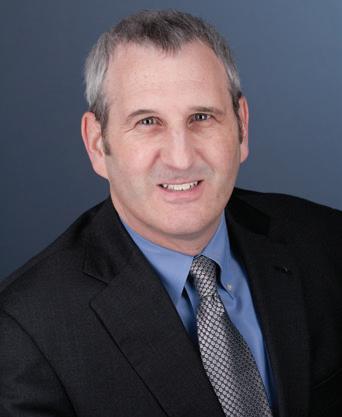RESEARCH NEWS
KU Engineering Launches New Satellite Design and Development Lab by Joel Mathis
A
new laboratory that opened in fall 2019 at the KU School of Engineering provides a stateof-the-art environment for aerospace engineering students to design and build launch-worthy satellites. The Hill Space Systems Laboratory in Learned Hall features a 12-by12-foot clean “white room” where students don protective clothing while they build nano-satellites, which weigh in at just under 10 kilograms, for a planned launch into Earth orbit. A second room in the same lab is stocked with computer equipment so students can design and test their creations. “We’re hoping to have student satellite launches — microsatellites, nanosatellites — every other year,” said Rick Hale, chair of the Aerospace Engineering Department at KU. KU engineering students have long sought to build and launch their own small satellite into space. In 2006, there were plans to launch a satellite under the CubeSat program, which launches “nano-satellites” from universities and other institutions across the country.
Those plans called for the satellite to be launched from Kazakhstan, aboard a Russian rocket, but that launch failed on the way to orbit. More recently, a student-led team had an application accepted to participate in NASA’s CubeSat Launch Initiative (CSLI), which launches small payloads beyond Earth’s atmosphere. CubeSats are built in units of 10-by-10by-11 centimeters and contain as many as six units. The KU satellite is built on a platform provided by Tyvak Nanosatellite Systems, whose chief operating officer, Marco Villa, was the student who led KU’s 2006 launch effort. The satellite contains three units: • An energetic particle detector, provided by Lawrence company Fundamental Technologies, led by an adjunct professor in the Department of Physics. • A primary cosmic ray detector that will help scientists determine how exposure to cosmic radiation will affect a future manned mission to Mars.
Photo by Cody Howard
Aerospace engineering students at work in the Hill Space Systems Laboratory shortly after it opened in fall 2019. The lab provides new opportunities for students to build and launch their own small satellite into space. 28 | FALL 2020
• An instrument that provides calibration signals from space for a particle detector, located deep within the Antarctic ice, that collects information on ultra-high-energy cosmic rays arriving at Earth, thereby helping physicists understand how galaxies have evolved over the last 1.3 billion years. The new laboratory is part of an effort at KU to expand its prestigious aerospace program to include more programming for students interested in space exploration. The School of Engineering also hired a new faculty member to aid in the effort. “About half of incoming students are interested in astronautics and about half are in for aeronautics. NASA is very good at inspiring the next generation,” Hale said. “Then there is an increase in jobs and opportunities as well. So there has also been an increase on the outgoing side of students who want to work in this space.” The new laboratory was made possible by a gift from Ron Hill, president of the Hemco Corporation in Independence, Missouri, and his wife, the late Sue Hill, as well as a matching gift from Hemco. The couple also made possible the Hill Engineering Research and Development Center, which opened at KU in 2013. “They’ve been stalwart supporters of the School of Engineering,” Hale said. “This gift can be transformational for our department. This enables us to do something that we couldn’t have done before.”





















